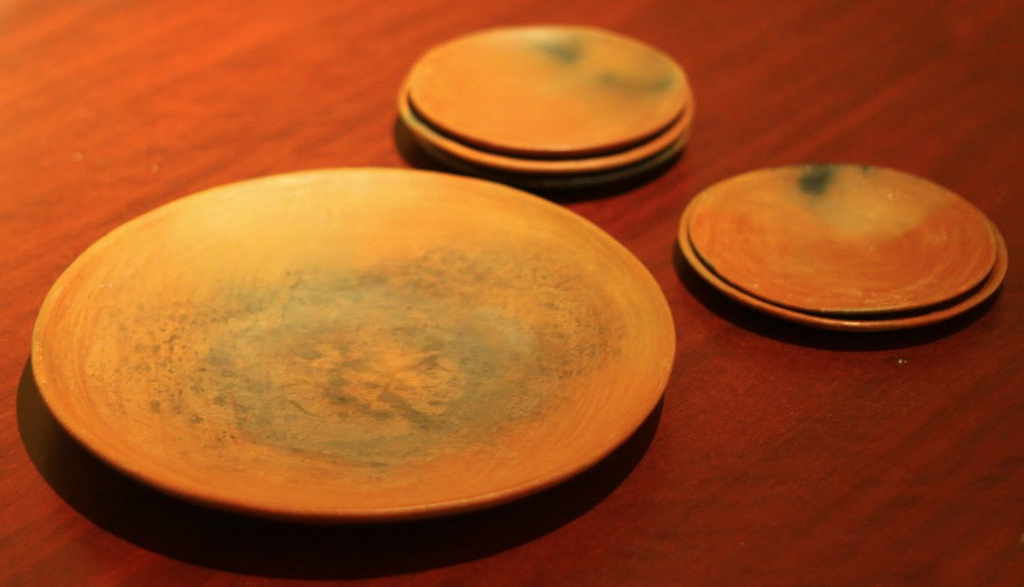|
COMAL
Comal may refer to: * COMAL, a computer programming language * Comal (cookware), a type of griddle Places * Comal River (Indonesia) * Comal County, Texas, U.S. * Comal River, Texas, U.S. * Comal Springs (Texas), U.S. See also * {{disambiguation, geo ... [...More Info...] [...Related Items...] OR: [Wikipedia] [Google] [Baidu] |
Comal (cookware)
A comal is a smooth, flat griddle typically used in Mexico, Central America, and parts of South America, to cook tortillas and arepas, toast spices and nuts, sear meat, and generally prepare food. Similar cookware is called a '' budare'' in South America. Some comals are concave and made of ''barro'' (clay). These are still made and used by the indigenous peoples of Mexico and Central America. Comals are similar to the American griddle or the Indian tawa, and are often used and named interchangeably with these. Comals for home use are generally made from heavy cast iron, and sized to fit over either one burner on the stovetop (round) or two burners front to back (elongated oval). In many indigenous and pre-Hispanic cultures, the comal is handed down from grandmother to mother to daughter, the idea being that a comal tempered over many years of use will heat faster and cook cleaner. History The history of such cooking methods dates back to the pre-Columbian era, when powde ... [...More Info...] [...Related Items...] OR: [Wikipedia] [Google] [Baidu] |
Comal River (Indonesia)
The Comal River is a river in Jawa Tengah, Indonesia. It rises in the North Serayu Mountains from Mount Slamet. The river has a length of around 109.18 km flowing from south to north, ending in Java Sea. It is the largest river in Pemalang Regency, Central Java, and flows through seven districts within that regency.Kantor Statistik Kabupaten Pemalang (2008). Pemalang dalam Angka 2008', Pemerintah Kabupaten Daerah Tk. II Pemalang, BPS. Hlm. 246. Geography The river flows along the central north area of Java with a predominantly tropical monsoon climate. The annual average temperature in the area is 25 °C. The warmest month is September, when the average temperature is around 29 °C, and the coldest is March, at 22 °C. The average annual rainfall is 2758 mm. The wettest month is January, with an average of 492 mm rainfall, and the driest is September, with 23 mm rainfall. Hydrology The Comal River is the main stream in the drainage basin ... [...More Info...] [...Related Items...] OR: [Wikipedia] [Google] [Baidu] |
Comal County, Texas
Comal County ( ) is a county located on the Edwards Plateau in the U.S. state of Texas. As of the 2020 census, its population was 161,501. Comal County is known for its rich German-Texan and European history. Its county seat is New Braunfels. Comal County is part of the San Antonio-New Braunfels, TX metropolitan statistical area. Along with Hays and Kendall Counties, Comal was listed in 2017 of the nation's 10 fastest-growing large counties with a population of at least 10,000. In 2017, Comal County was second on the list; it grew by 5,675 newcomers, or 4.4% from 2015 to 2016. Kendall County was the second-fastest growing county in the nation in 2015 to 2016, growing by 5.16%. Hays County, third on the national list, had nearly 10,000 new residents during the year. As a result of this growth, the counties have experienced new home construction, traffic congestion, and greater demand for public services. Bexar County, which includes San Antonio, grew by 1.75% during the y ... [...More Info...] [...Related Items...] OR: [Wikipedia] [Google] [Baidu] |
Comal River
The Comal River ( ) is the shortest navigable river in the state of Texas in the United States. Proclaimed the "longest shortest river in the world" by locals, it runs entirely within the city limits of New Braunfels in southeast Comal County. It is a tributary of the Guadalupe River. The Comal begins at Comal Springs in Landa Park and flows until its junction with the Guadalupe. The Comal was originally called the Little Guadalupe in early Spanish accounts. After Spaniard Pedro de Rivera y Villalón identified the longer river as the Guadalupe in 1727, the Comal was given its current name. The name means "basin" or "flat dish" in Spanish. Historically, the Comal was used to power watermills and cotton gins by early German settlers, and later to provide hydroelectric power. The river is primarily used for water recreation today, being the location of the original Schlitterbahn water amusement park. The water is administered by the Guadalupe-Blanco River Authority. The rive ... [...More Info...] [...Related Items...] OR: [Wikipedia] [Google] [Baidu] |

